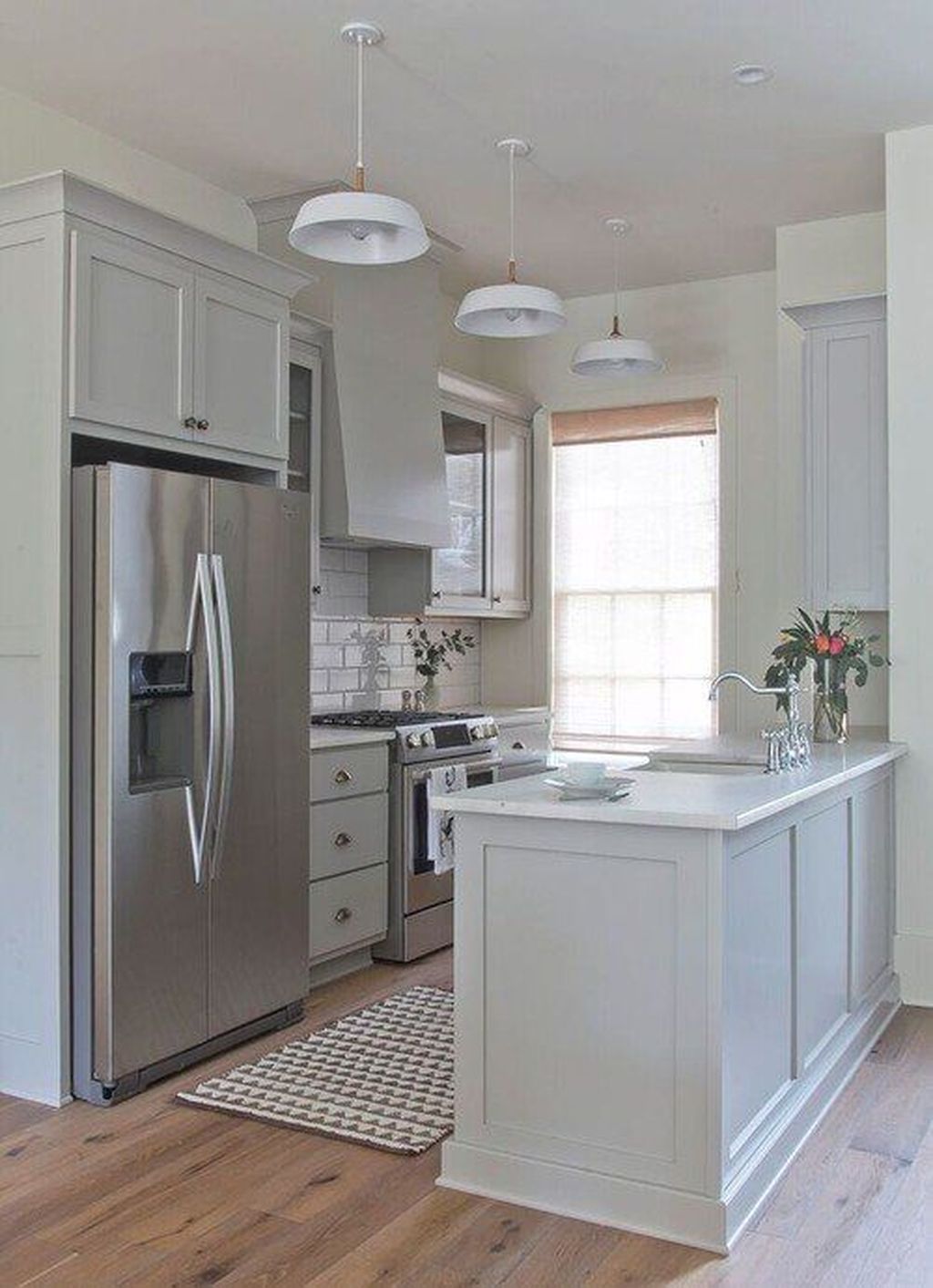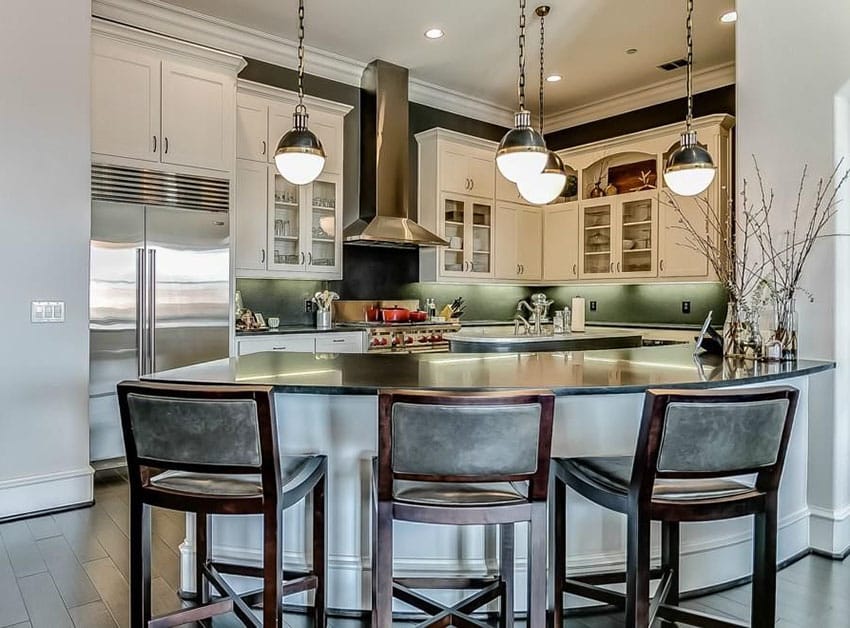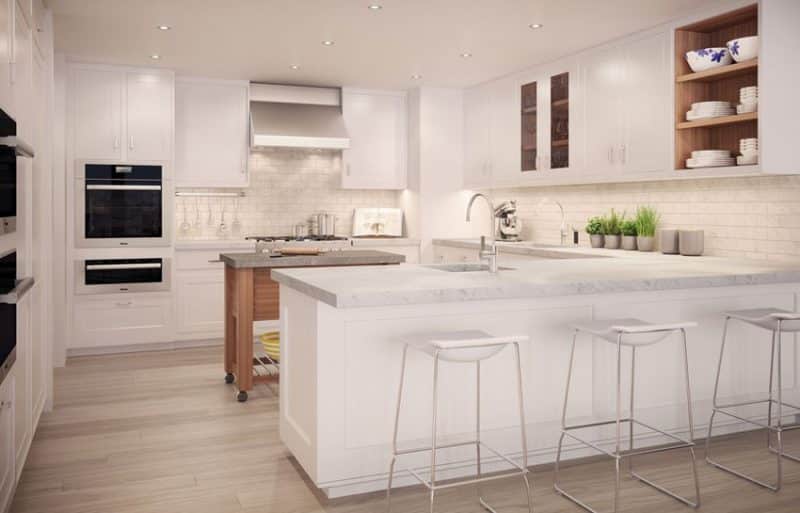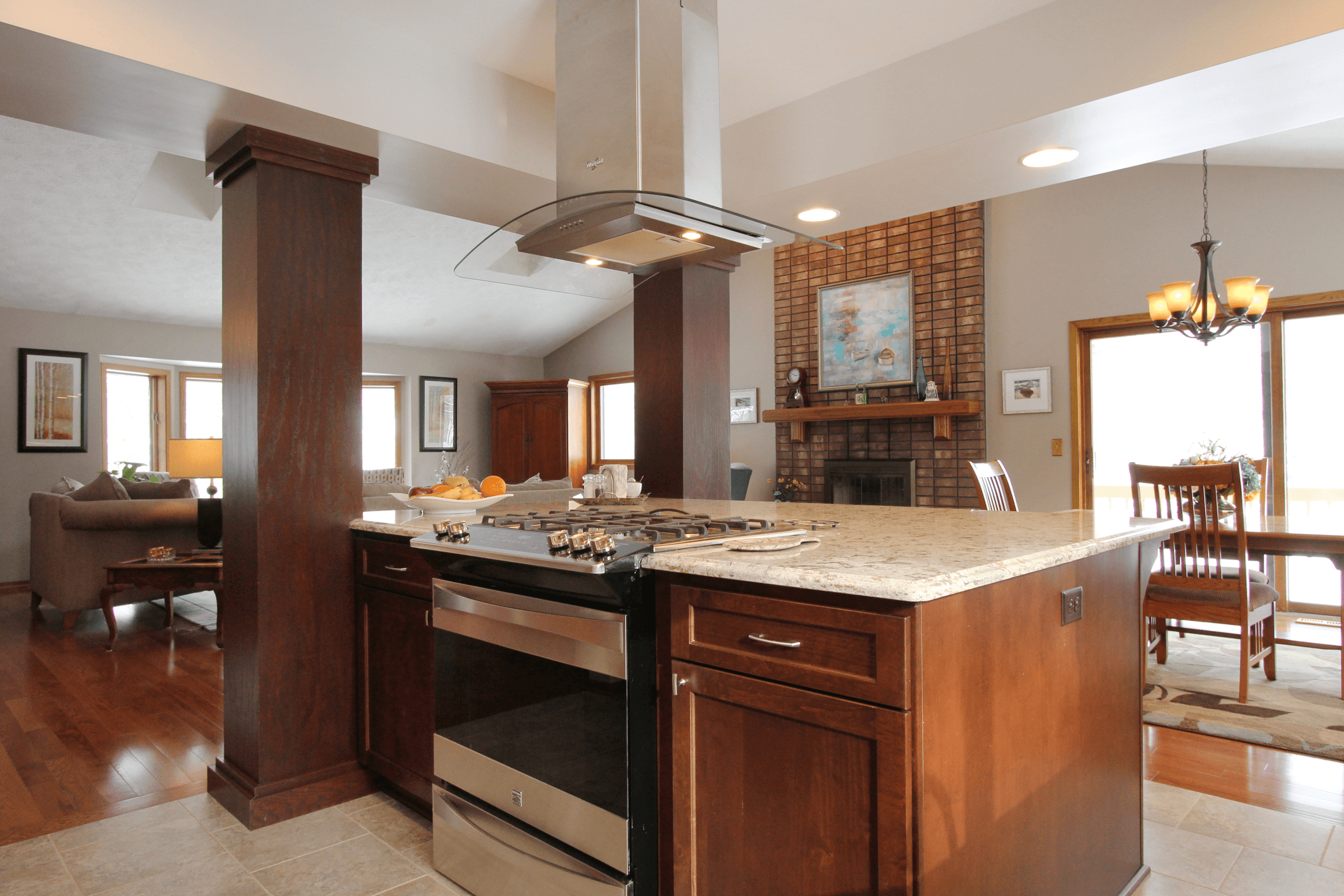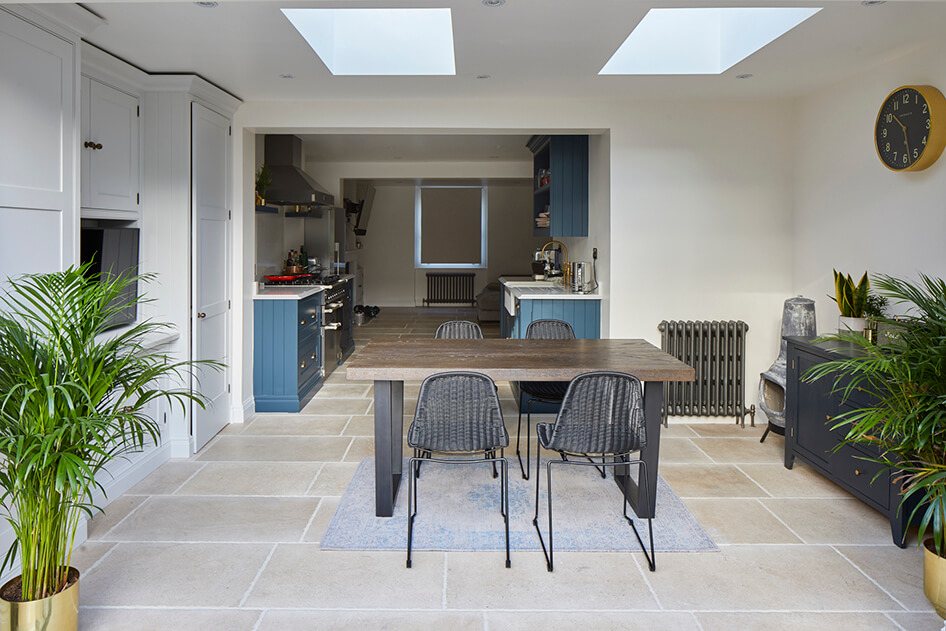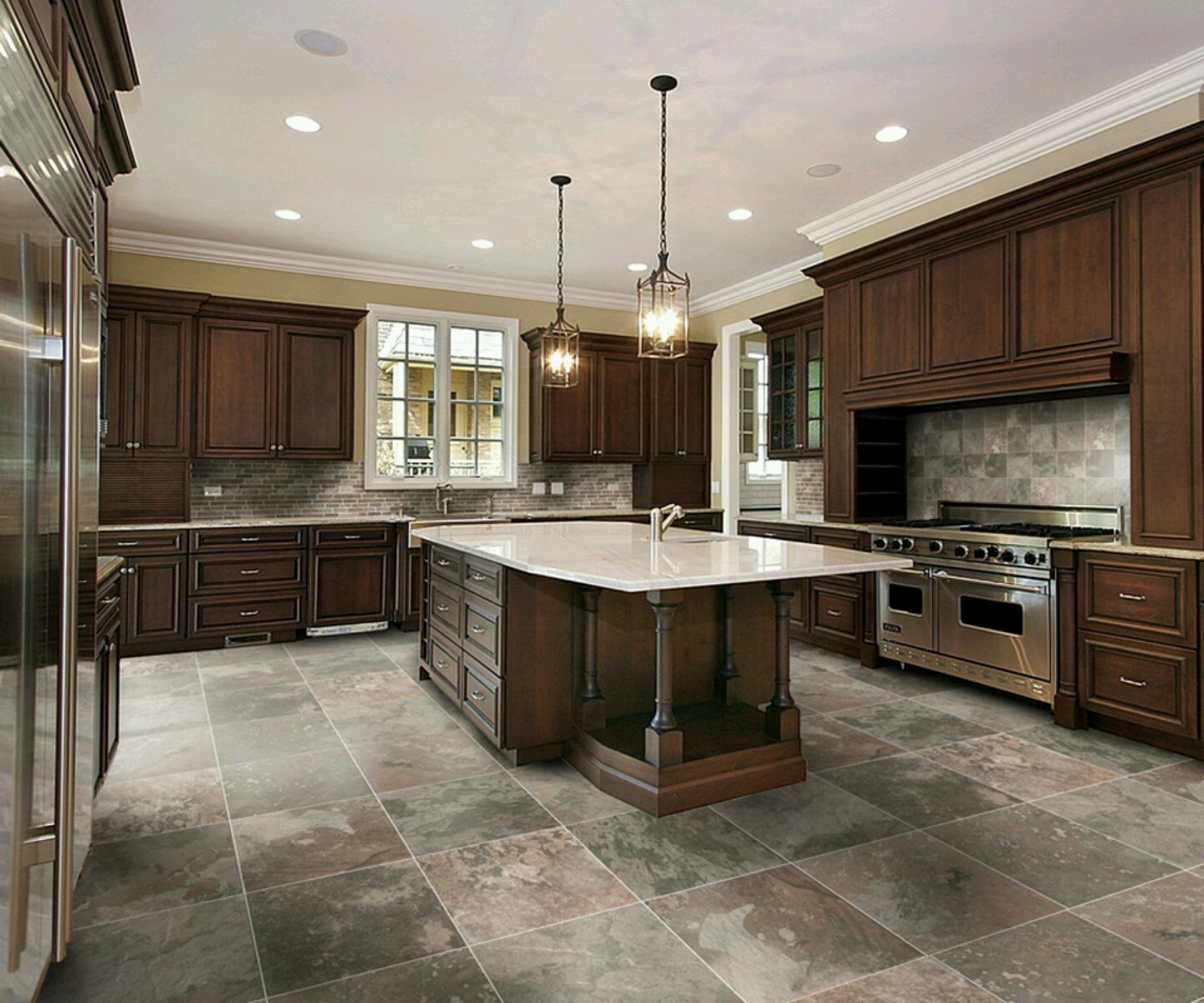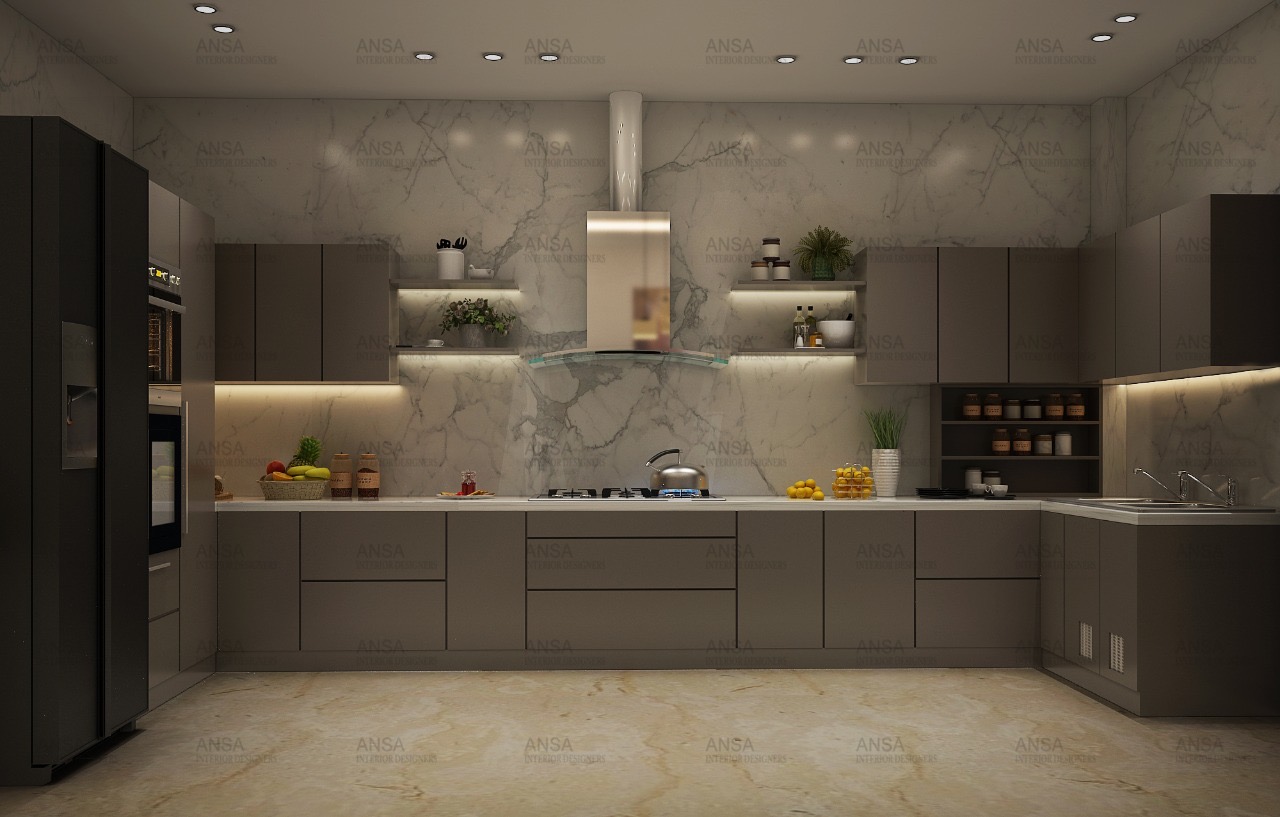Designing an L-Shaped Kitchen
The L-shaped kitchen is a popular layout that offers ample counter and storage space. It is ideal for small to medium-sized kitchens and provides a functional and efficient workspace. When designing an L-shaped kitchen, there are a few key things to keep in mind to maximize the layout's potential.
Utilize Corner Space: The corner space in an L-shaped kitchen can often be overlooked, but it is crucial to make the most of this area. Consider installing a corner cabinet with a Lazy Susan or adding open shelving for easy access to frequently used items.
Separate Work Zones: With two adjoining walls, an L-shaped kitchen allows for designated work zones. One wall can be dedicated to cooking and food prep, while the other can be used for cleaning and storage. This separation of tasks can increase efficiency in the kitchen.
Add an Island: A well-designed L-shaped kitchen layout can accommodate an island in the middle, creating even more counter and storage space. This can also serve as a casual dining or seating area, making the kitchen a more social space.
Utilize Natural Light: When designing an L-shaped kitchen, consider the placement of windows to maximize natural light. This can make the space feel more open and airy, enhancing the overall design and functionality of the kitchen.
Designing a U-Shaped Kitchen
The U-shaped kitchen is a versatile layout that offers plenty of counter and storage space. This design is ideal for larger kitchens and can provide a functional and efficient workspace for multiple users. When designing a U-shaped kitchen, there are a few key things to consider to make the most of the layout.
Maximize Storage: With three walls of cabinetry, a U-shaped kitchen offers ample storage opportunities. Take advantage of this by incorporating tall cabinets, deep drawers, and pull-out shelves to make the most of every inch of space.
Create a Work Triangle: The U-shaped kitchen is perfect for creating a functional work triangle between the sink, stove, and refrigerator. This layout allows for easy movement between these key areas, increasing efficiency in the kitchen.
Incorporate an Island: For larger U-shaped kitchens, consider adding an island in the center of the space. This can provide additional counter and storage space and serve as a central gathering spot for family and friends.
Consider the Flow of Traffic: With multiple entry points in a U-shaped kitchen, it is essential to consider the flow of traffic. Ensure that there is enough space for people to move around comfortably without disrupting the work areas.
Designing a Galley Kitchen
The galley kitchen, also known as a corridor kitchen, is a design that features two parallel walls of cabinetry and countertops. This layout is popular in smaller homes and apartments and can provide an efficient and functional workspace. When designing a galley kitchen, there are a few key things to consider to make the most of the space.
Maximize Vertical Space: With limited floor space, it is essential to maximize vertical space in a galley kitchen. Consider installing tall cabinets or adding shelving above the countertops to provide additional storage options.
Keep the Work Triangle in Mind: In a galley kitchen, it is crucial to keep the work triangle between the sink, stove, and refrigerator in mind. This layout can be more challenging to achieve, but it is essential for creating an efficient workflow.
Utilize Light Colors: To make a galley kitchen feel more spacious, opt for light colors for the cabinetry and countertops. This can help reflect light and make the space feel more open and airy.
Incorporate Clever Storage Solutions: In a galley kitchen, it is crucial to make the most of every inch of space. Consider incorporating pull-out shelves, sliding drawers, or hanging storage to maximize storage and keep the countertops clutter-free.
Designing a Peninsula Kitchen
The peninsula kitchen is a hybrid design that combines elements of both an L-shaped and a U-shaped kitchen. It features a connected island that extends from one of the walls of the kitchen, creating an open and functional space. When designing a peninsula kitchen, there are a few key things to keep in mind.
Consider the Layout: The layout of a peninsula kitchen can vary, so it is essential to determine the best configuration for your space. Consider the placement of the island and how it will affect traffic flow and work zones in the kitchen.
Make a Statement with the Peninsula: The peninsula is a significant feature in this kitchen design, so make the most of it by incorporating unique materials or a different color scheme. This can add visual interest and make the space feel more personalized.
Incorporate Seating: The peninsula in a kitchen can also serve as a casual seating area, making it a more social space. Consider adding bar stools or a built-in banquette to create a comfortable and functional dining spot.
Utilize Storage Opportunities: Like any other kitchen layout, it is essential to make the most of storage opportunities in a peninsula kitchen. Incorporate cabinets, drawers, and shelving into the island to provide additional storage options.
Designing a G-Shaped Kitchen
The G-shaped kitchen is an extension of the U-shaped kitchen, featuring an additional peninsula or island connected to one of the walls. This design provides even more counter and storage space, making it ideal for larger families or those who love to cook. When designing a G-shaped kitchen, there are a few key things to keep in mind.
Consider the Space: A G-shaped kitchen requires more floor space than other layouts, so it is essential to determine if your kitchen can accommodate this design. Consider how the additional peninsula or island will affect traffic flow and work zones in the kitchen.
Maximize Storage: With the added peninsula or island, a G-shaped kitchen offers even more storage opportunities. Consider incorporating deep drawers, pull-out shelves, and tall cabinets to make the most of every inch of space.
Create a Work Triangle: Similar to a U-shaped kitchen, it is crucial to create a functional work triangle between the sink, stove, and refrigerator in a G-shaped kitchen. This will ensure an efficient workflow and make cooking and food prep more manageable.
Consider Adding Seating: The additional peninsula or island in a G-shaped kitchen can also serve as a casual dining or seating area. Consider adding bar stools or a built-in banquette to make the kitchen a more social space.
Designing a One-Wall Kitchen
The one-wall kitchen is a layout that features all of the cabinetry and appliances along one wall, making it ideal for smaller spaces or open-plan living areas. When designing a one-wall kitchen, there are a few key things to consider to make the most of the space.
Maximize Vertical Space: In a one-wall kitchen, it is essential to make the most of vertical space. Consider installing tall cabinets or shelves to provide additional storage without taking up too much floor space.
Utilize Multifunctional Pieces: In a small one-wall kitchen, it is crucial to utilize multifunctional furniture pieces. Consider a kitchen island that can serve as a prep area, dining table, and storage space to make the most of the limited space.
Incorporate Light Colors: Light colors can help make a one-wall kitchen feel more spacious and open. Consider using light-colored cabinetry and countertops to reflect light and create a more airy atmosphere.
Keep it Simple: In a one-wall kitchen, less is often more. Keep the design simple and clutter-free to avoid overwhelming the space. Consider utilizing hidden storage options to keep countertops free and open.
Designing an Island Kitchen
The island kitchen is a popular design that features a freestanding island in the center of the space. This layout provides additional counter and storage space and can serve as a central gathering spot for family and friends. When designing an island kitchen, there are a few key things to keep in mind.
Consider the Size of the Island: The size of the island in an island kitchen can vary, so it is essential to determine the best size for your space. Consider the available floor space and how much room is needed for seating and traffic flow.
Make it Functional: The island in a kitchen can serve many purposes, so it is essential to make it functional. Incorporate a sink, stovetop, or additional storage into the island to maximize its potential.
Incorporate Seating: An island in a kitchen can also serve as a casual dining or seating area. Consider adding bar stools or a built-in banquette to create a comfortable and functional dining spot.
Make a Statement: The island in a kitchen can be a significant feature, so make it stand out by incorporating unique materials or a different color scheme. This can add visual interest and make the space feel more personalized.
Designing an Open-Plan Kitchen
An open-plan kitchen is a design that combines the kitchen, dining, and living areas into one large and open space. This layout is perfect for those who love to entertain and want a more social and connected living space. When designing an open-plan kitchen, there are a few key things to keep in mind.
Consider the Flow of Traffic: With an open-plan kitchen, it is crucial to consider the flow of traffic between the kitchen, dining, and living areas. Ensure that there is enough space for people to move around comfortably without disrupting the different zones.
Make a Smooth Transition: To create a cohesive and connected living space, it is essential to make a smooth transition between the kitchen and other areas. Consider using the same flooring, cabinetry, and color scheme to tie the space together.
Incorporate Plenty of Seating: In an open-plan kitchen, it is essential to have plenty of seating options for guests. Consider incorporating a kitchen island with bar stools or a built-in banquette to provide additional seating options.
Utilize Multifunctional Pieces: Just like in a one-wall kitchen, it is crucial to utilize multifunctional furniture pieces in an open-plan kitchen. Consider a kitchen island that can serve as a prep area, dining table, and storage space to make the most of the space.
Designing a Small Kitchen
Designing a small kitchen can be a challenge, but with the right layout and design elements, it can still be a functional and stylish space. When designing a small kitchen, there are a few key things to keep in mind.
Maximize Vertical Space: In a small kitchen, it is essential to make the most of vertical space. Consider installing tall cabinets or shelves to provide additional storage without taking up too much floor space.
Utilize Light Colors: Light colors can help make a small kitchen feel more spacious and open. Consider using light-colored cabinetry and countertops to reflect light and create a more airy atmosphere.
Keep it Simple: In a small kitchen, less is often more. Keep the design simple and clutter-free to avoid overwhelming the space. Consider utilizing hidden storage options to keep countertops free and open.
Incorporate Multifunctional Pieces: To make the most of a small kitchen, consider incorporating multifunctional furniture pieces. This can include a kitchen island that can serve as a prep area, dining table, and storage space.
Designing a Modern Kitchen
A modern kitchen is characterized by clean lines, minimalism, and a sleek and streamlined design. When designing a modern kitchen, there are a few key things to keep in mind to achieve this aesthetic.
Utilize Sleek Materials: To create a modern look, incorporate sleek and shiny materials such as stainless steel, glass, and high-gloss finishes. These materials will add a touch of sophistication and make the space feel more contemporary.
Keep the Design Simple: A modern kitchen is all about simplicity, so keep the design clean and clutter-free. Avoid ornate details and choose simple, straight lines for cabinetry and countertops.
Incorporate Bold Colors: While a modern kitchen is typically characterized by a monochromatic color scheme, adding a pop of bold color can add visual interest and make the space feel more personalized. Consider incorporating a bold accent wall or colorful appliances.
Utilize Hidden Storage: In a modern kitchen, it is essential to keep countertops and surfaces free of clutter. Consider utilizing hidden storage options, such as pull-out shelves and deep drawers, to keep the space looking sleek and streamlined.
Designing an A-Shaped Kitchen for Optimal Functionality and Style

The Benefits of an A-Shaped Kitchen
 When it comes to designing a functional and stylish kitchen, one layout that is often overlooked is the A-shaped kitchen. This layout, also known as the "one-wall kitchen," features a single wall of cabinets and appliances, creating a triangular shape. While it may seem unconventional, an A-shaped kitchen offers many benefits that make it a popular choice among homeowners and designers alike.
When it comes to designing a functional and stylish kitchen, one layout that is often overlooked is the A-shaped kitchen. This layout, also known as the "one-wall kitchen," features a single wall of cabinets and appliances, creating a triangular shape. While it may seem unconventional, an A-shaped kitchen offers many benefits that make it a popular choice among homeowners and designers alike.
Efficient Use of Space
/172788935-56a49f413df78cf772834e90.jpg) One of the main advantages of an A-shaped kitchen is its efficient use of space. By keeping all the appliances and cabinets along one wall, it allows for more open space in the rest of the kitchen. This is especially beneficial for smaller homes or apartments where space is limited.
This layout also works well for open-concept living spaces, as it creates a seamless flow between the kitchen and living area.
Additionally, the A-shape allows for a clear work triangle between the sink, stove, and refrigerator, making it easier to navigate and use the kitchen efficiently.
One of the main advantages of an A-shaped kitchen is its efficient use of space. By keeping all the appliances and cabinets along one wall, it allows for more open space in the rest of the kitchen. This is especially beneficial for smaller homes or apartments where space is limited.
This layout also works well for open-concept living spaces, as it creates a seamless flow between the kitchen and living area.
Additionally, the A-shape allows for a clear work triangle between the sink, stove, and refrigerator, making it easier to navigate and use the kitchen efficiently.
Maximizing Storage
 With an A-shaped kitchen, there is ample opportunity to
maximize storage space
by utilizing the entire length of the wall. This can be achieved through the use of floor-to-ceiling cabinets, extending all the way to the ceiling. This not only increases storage space, but it also adds visual interest and makes the kitchen feel larger.
With an A-shaped kitchen, there is ample opportunity to
maximize storage space
by utilizing the entire length of the wall. This can be achieved through the use of floor-to-ceiling cabinets, extending all the way to the ceiling. This not only increases storage space, but it also adds visual interest and makes the kitchen feel larger.
Design Flexibility
 Another advantage of an A-shaped kitchen is its design flexibility. With all the cabinets and appliances on one wall, there is more room to play with different layouts and design elements, such as adding a kitchen island or incorporating a breakfast bar. This allows for a customized and personalized kitchen that fits the homeowner's specific needs and style preferences.
Another advantage of an A-shaped kitchen is its design flexibility. With all the cabinets and appliances on one wall, there is more room to play with different layouts and design elements, such as adding a kitchen island or incorporating a breakfast bar. This allows for a customized and personalized kitchen that fits the homeowner's specific needs and style preferences.
Creating a Focal Point
 The A-shape of this kitchen layout also creates a natural focal point in the room. By having all the appliances and cabinets in one place, it draws the eye and creates a streamlined and cohesive look. This can be further enhanced by using
bold and eye-catching features
such as statement lighting or a unique backsplash.
The A-shape of this kitchen layout also creates a natural focal point in the room. By having all the appliances and cabinets in one place, it draws the eye and creates a streamlined and cohesive look. This can be further enhanced by using
bold and eye-catching features
such as statement lighting or a unique backsplash.
In Conclusion
 While the A-shaped kitchen may not be the most common layout, it offers many benefits that make it worth considering for your home. Its efficient use of space, storage capabilities, design flexibility, and ability to create a focal point make it a practical and stylish choice for any kitchen. Consider incorporating an A-shaped kitchen in your house design for a functional and visually appealing space.
While the A-shaped kitchen may not be the most common layout, it offers many benefits that make it worth considering for your home. Its efficient use of space, storage capabilities, design flexibility, and ability to create a focal point make it a practical and stylish choice for any kitchen. Consider incorporating an A-shaped kitchen in your house design for a functional and visually appealing space.











